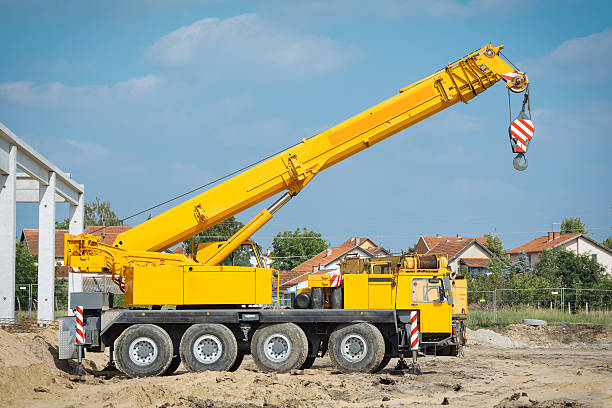Using cranes on your building site is one of the simplest ways to transport large objects. But picking the best crane might be challenging considering the wide range of options. You should pick one depending on your project’s difficulty, length, and scope. Here are some recommendations to assist you in selecting the appropriate crane.
Check the load weight that needs lifting.
Naturally, moving the load requires a crane with a proper lifting capacity. You will probably waste time, labor, and money if you employ a high-capacity crane for a tiny load. Conversely, a low-capacity crane increases the risk of tragic mishaps and harms the cargo.
Additionally, you must decide the kind of cargo you’ll be moving. It is essential to your project’s success. Transferring a liquid-filled tank and carrying a large machine or a concrete block will necessitate different lifting procedures. To put it briefly, the load will dictate the lifting services you require, which will determine the type of crane you choose.
Know the lift height and horizontal distance
The lift height is the second thing you should consider, especially for multi-story construction projects. You must select a crane with the right boom length based on how high the cargo has to be lifted.
Typically, the load charts will contain information about the boom length and capacity. According to Kor Pak experts, the boom is the slanted spar or strut holding up the hoisting tackle. The load weight greatly influences the crane’s stability, the resting support, and the angle and radius of the boom.
Look at the accessibility and conditions on-site.
The crane you choose will depend on your building site and how you can get to it. Some of the cranes used in the construction sector require on-site assembly.
For instance, even though lattice boom crawler cranes carry the most weight, you frequently have to transport and construct them on location. They are, therefore, frequently more appropriate for lengthy projects needing significant lift heights and load reaches.
Measure the Moving Distance (Horizontal).
The crane must move a certain amount horizontally to pick up the weight, just like it must move vertically. You must get a mobile crane with wheels if you need to move the equipment from one location to another. You can utilize a crane with rails if there is a fixed movement path.
Traveling this distance safely will depend heavily on the counterbalance, support structure, and boom stability, which are the three main variables. Verify the crane’s rated load weight. It establishes the ideal separation between the crane’s base and the weight at the hook’s end.
Verify Potential Safety Issues.
This requires two inspections. You must look for any potential safety issues around the crane and its immediate surroundings. A local crane inspector might be the best choice for the task because they are likely familiar with the area’s weather patterns, site geography, and legal requirements.
The bottom line
Each crane in a building project is often made to fulfill a specific function. In other words, selecting the appropriate crane type is crucial to the success of your project.






Comments